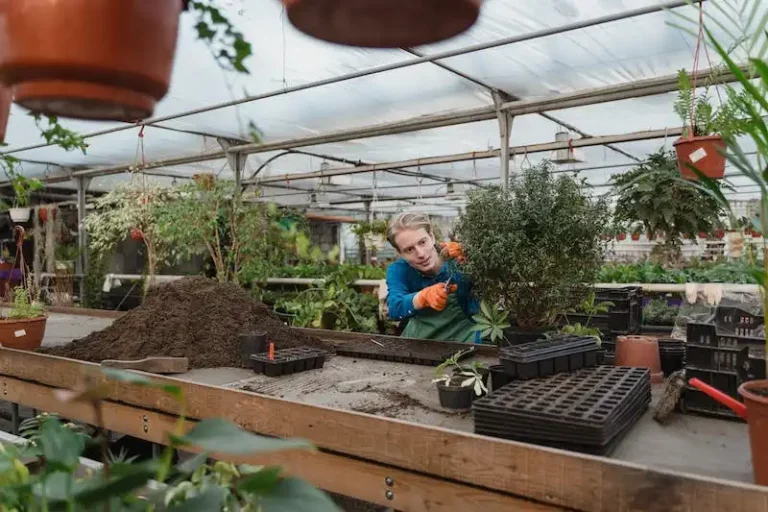Irises are beautiful plants that can add vibrant color to your garden. Whether you have grown irises for years or are just starting out, knowing when to transplant them is important for their health and continued growth.
Transplanting irises is typically done when they are dormant, which is in late summer or early fall. This is the best time to separate rhizomes, as they are easier to handle and less likely to suffer from transplant shock. Transplanting them in early spring is also an option, but it may be a bit riskier as the irises have already started to grow.
If your iris plants have become overcrowded or are showing signs of diseased or lack of blooms, it may be time to transplant them. Dividing and transplanting irises can help rejuvenate them, promote healthy growth, and prevent possible diseases.
When choosing a site for your transplanted irises, consider the growing conditions. Irises prefer well-drained soil and full sun, although some varieties, such as the Siberian iris, can tolerate partial shade. Make sure the soil is thoroughly prepared and free from weeds and other competing plants.
When transplanting irises, dig a hole deep and wide enough to accommodate the rhizomes. Set the rhizomes in the hole, with their tops just above the soil surface. Space them about a foot apart, allowing enough room for them to grow and multiply. Additionally, make sure the soil is well-drained to prevent rot or fungal diseases.
After transplanting, water the irises thoroughly and apply a layer of mulch around the plants. This will help retain moisture and suppress weeds. During the first growing season, be sure to provide regular water to help establish the newly transplanted irises.
In conclusion, determining when to transplant irises is crucial for their health and well-being. By following the proper techniques and considering the growing conditions, you can successfully transplant and divide irises, resulting in beautiful blooms and healthy plants.
Dividing Irises
Iris plants, particularly Siberian irises, can benefit from division every few years. Dividing irises not only helps maintain plant vigor, but it also allows you to propagate more plants for your garden. The best time to divide iris plants is in the early fall, several weeks after they have finished flowering.
When dividing irises, start by thoroughly watering the plants a day or two before you plan to dig them up. This will make it easier to lift the plants from the soil. Using a garden fork or spade, carefully dig around the iris clumps, taking care not to break the rhizome system. Lift the clumps out of the ground and gently shake off excess soil.
Once the iris clumps are lifted, you can separate the individual rhizomes into smaller clumps. Look for the areas where the rhizomes appear to be separate or where there is a natural break between sections. Using a sharp, clean knife, divide the clumps into sections, ensuring that each section has a healthy-looking fan of leaves.
Before replanting the divided irises, it’s important to prepare the new planting site. Choose a location with well-draining soil and plenty of sunlight. Dig a hole that is wide and deep enough to accommodate the iris rhizomes, leaving enough space between each division. Amend the soil with compost or other organic matter to ensure good drainage.
When planting the divided rhizomes, place them no more than an inch deep in the soil. Make sure the roots are spread out and covered with soil. Water the newly planted irises thoroughly to help them settle in. Dividing irises in the early fall gives them enough time to establish their root systems before winter sets in.
After dividing irises, it’s important to give the plants proper care to promote healthy growth. During the first year after transplanting, irises may appear weak or lack vigor. However, with proper care, they should regain their strength and produce beautiful blooms. Water the plants regularly, especially during dry periods, and mulch around the plants to help conserve moisture.
It’s also important to keep an eye out for any insect or disease problems. Thin, weak, or diseased rhizomes should be removed and discarded. Additionally, irises should be divided every three to five years to prevent overcrowding and maintain plant health.
By following these tips on dividing irises, you can ensure that your plants continue to thrive and bring color to your garden year after year. With a little extra effort, you can enjoy the beauty of irises in your garden for many seasons to come.
Whento Transplant Irises
Transplanting irises should be done at the right time to ensure their successful growth and bloom. The ideal time for transplanting irises is during the late summer or early fall when the plants are not actively growing. This allows them to establish themselves in their new location before the onset of winter.
Before transplanting, choose a site that meets the requirements of the irises. Irises prefer a sunny spot with well-drained soil. The soil should be moderately fertile and have a pH level between 6.8 and 7.1. If the soil lacks these conditions, it can be amended by adding compost or other organic matter.
When transplanting irises, it is important to dig up the entire clump of irises from their current location. Use a garden fork or a shovel to carefully dig around the clump, avoiding any damage to the rhizomes. Lift the clump out of the ground and gently separate the individual rhizomes.
Before replanting the irises, trim back the foliage to about 6 inches in length. This will help reduce water loss and allow the plants to focus their energy on establishing their root system.
|
How to Transplant Irises
|
When replanting the irises, make sure to space them apart to allow for adequate air circulation. A general rule of thumb is to separate the rhizomes by about 12 to 18 inches. This will prevent overcrowding and reduce the risk of diseases.
After planting, water the newly transplanted irises thoroughly to settle the soil around the rhizomes. Keep the soil evenly moist until the plants become established. Once established, irises are quite drought-tolerant.
In the following spring, the transplanted irises should show signs of new growth and vigor. However, it may take a year or two for the plants to reach their full blooming potential. During this time, continue to provide them with adequate water and care.
It’s also a good idea to divide irises every three to five years to maintain their health and vigor. Dividing the rhizomes allows the plants to rejuvenate and prevents overcrowding. This should be done in late summer or early fall, following the same steps as transplanting.
By transplanting and dividing irises, you can have a beautiful and colorful display in your garden for many years. With proper care and maintenance, irises will reward you with stunning blooms year after year.
Source: link-to-source
How do I divide and transplant Bearded Iris
Dividing and transplanting bearded iris is a great way to maintain the health and vigor of your iris plants. Here are the steps to follow:
- Choose the best time to divide and transplant your irises. The ideal time is immediately after they have finished blooming, typically in early summer or early fall.
- Prepare the soil where you will be transplanting your irises. It should be well-draining and rich in organic matter. Amend the soil with compost or well-rotted manure if it lacks in nutrients.
- Water the clumps of irises thoroughly a day or two before dividing them. This will help loosen the soil and make the process easier.
- Use a garden fork or a shovel to carefully lift the clumps of irises out of the ground. Gently shake off the excess soil to expose the rhizomes.
- Separate the rhizomes by cutting them apart with a clean, sharp knife. Make sure that each divided rhizome has at least one strong, healthy fan of leaves.
- Inspect the rhizomes for any signs of diseases or damage. If you notice any diseased or rotten rhizomes, discard them to prevent the spread of diseases.
- Trim the foliage of the irises to about six inches in height. This will help the plants conserve energy and focus on establishing new roots.
- Plant the divided rhizomes in the prepared soil. Dig a hole large enough to accommodate the rhizome and place it in the hole with the roots facing downwards. The top of the rhizome should be level with the soil surface.
- Space the rhizomes about 12 to 18 inches apart to ensure proper air circulation and prevent overcrowding.
- Water the newly transplanted irises thoroughly after planting to help settle the soil around the roots.
- Consider applying a layer of additional mulch around the plants to suppress weeds and conserve moisture.
- Continue to water the transplanted irises regularly, especially during dry spells or drought conditions.
- Do not expect the transplanted irises to bloom the following spring. It may take them a year or two to establish a new root system and regain their vigor.
- Divide and transplant Siberian irises in the same way as bearded irises. They are also best divided and transplanted when they are dormant.
- Bearded irises can also be divided and transplanted in late winter or early spring before they begin to show signs of new growth.
- When dividing and transplanting bearded irises, it is important to provide them with good aftercare. Keep the newly transplanted irises well-watered and monitor them for any signs of bacterial or insect diseases.
- By following these steps, you can successfully divide and transplant your bearded iris plants, ensuring their continued growth and beautiful blooms.
Sources:
- Schreiners Gardens: https://www.schreinersgardens.com/
Dividing Iris
Dividing irises is a necessary step in growing beautiful and healthy plants. The rhizome system of irises can become overcrowded, leading to decreased blooming and overall plant health. By dividing irises, you can maintain the vigor and beauty of your plants.
When to divide irises:
- Divide bearded irises every 3-4 years.
- Divide Siberian irises every 4-5 years.
- Divide Aggie irises in early fall.
Tips for successful iris division:
- Choose a well-drained site with full sun for your iris beds.
- Before dividing, trim back the iris foliage to a height of 6 inches.
- Make sure to dig up the entire clump of irises.
- Use a sharp and clean knife or garden spade to separate the rhizomes.
- Remove any diseased or damaged rhizomes.
- Divide the rhizomes into smaller sections, ensuring that each section has at least one fan of leaves and a strong root system.
- Replant the divided irises in well-prepared soil, spacing them 18-24 inches apart.
- Water the newly planted irises thoroughly.
- Apply a layer of mulch around the plants to help conserve moisture and suppress weed growth.
Transplanting and dividing irises is typically done in late summer or early fall, allowing the new divisions to establish roots before the colder winter months. Avoid dividing irises during periods of extreme heat or frost.
Bearded irises are the most commonly divided iris type, but Siberian and Aggie irises can also benefit from division. Dividing irises not only improves their overall health, but it also provides an opportunity to increase your iris collection by creating additional plants. So, when to divide irises? The answer is before they become overcrowded and show signs of decline.
If you notice any signs of diseases, such as bacterial or fungal infections, it’s best to divide the irises and discard the diseased portions. Clean your tools and rhizomes with a solution of bleach and water between each cut to prevent the spread of diseases.
By following these tips and guidelines from reputable iris growers like Schreiner’s Gardens, you can ensure strong and beautiful irises in your garden year after year.



